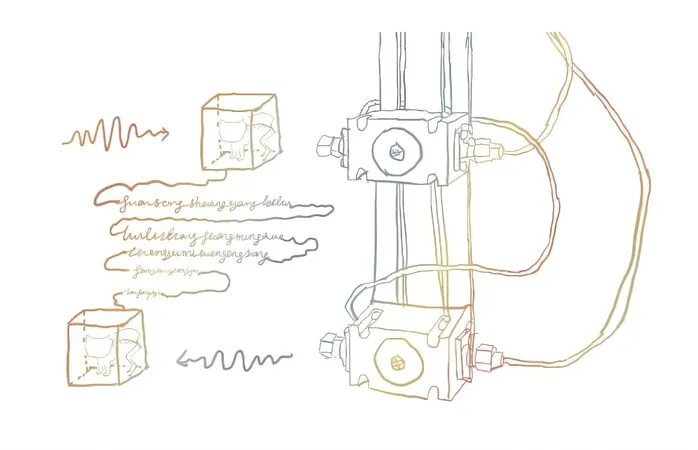
Unlocking Greenland's Melting Mystery: How Fibre Optics Are Changing Our Understanding of Climate Change
2025-08-20
Author: Sarah
The Alarming Meltdown of Greenland's Ice Sheet
Greenland's ice sheet is in crisis, losing approximately 270 billion tonnes of ice annually since 2002. This alarming rate has contributed to a sea-level rise of nearly two centimeters, signaling urgent threats for coastal communities worldwide.
A Revolutionary Insight into Ice Calving
For the first time, an international team of researchers led by universities in Zurich and Washington has harnessed cutting-edge fibre-optic technology to measure the rapid retreat of Greenland's ice sheet. Their findings, published in Nature as part of the Swiss Polar Institute's GreenFjord project, reveal how ice calving not only removes large chunks of ice but also supercharges the melting processes beneath the ocean's surface.
Andreas Vieli, a glaciologist at the University of Zurich, emphasized the breakthrough, stating, "We’ve now connected the dots between ice calving and accelerated melting beneath the waves." This research offers crucial insights into the fragile ice sheet that is significantly larger than Switzerland.
The Role of Icebergs in Climate Change
Icebergs calving into the sea are more than just a visual spectacle; they introduce warmer ocean water to the surface. This unique phenomenon, akin to ice cubes melting faster when stirred in a warm drink, further hastens the melting of glaciers. At the Eqalorutsit Kangilliit Sermiat glacier in southern Greenland alone, around 3.6 cubic kilometers of ice break away each year.
Innovative Technology Mapping Melting Dynamics
To capture the unseen impacts of iceberg calving, researchers laid a 10-kilometer-long fibre-optic cable on the ocean floor. Through a method called Distributed Acoustic Sensing (DAS), they recorded underwater waves’ effects on the cable, effectively creating a network of sensors that track changes in real time. Lead author Dominik Gräff described this innovation as a game-changer, allowing scientists to observe how underwater dynamics accelerate ice loss.
The Bigger Picture: Global Implications
This sophisticated method not only sheds light on Greenland's worrying ice dynamics but also contributes to our understanding of broader climate impacts. Half of Greenland's current mass loss arises directly from these underwater interactions. With the entire ice sheet's melt potentially triggering dramatic shifts in global sea levels, the stakes couldn't be higher.
From Switzerland to the Arctic: A Global Methodology for Disaster Prediction
The application of fibre optics in glacier research isn't just a newfound trend; it's revolutionizing how scientists monitor the ice in real-time. Switzerland has been at the forefront of this technology, utilizing fibre optics on glaciers to detect micro-vibrations and signs of instability, crucial for predicting natural disasters. This innovative approach allows researchers to cover expansive areas, identifying potential threats not easily studied by traditional methods.
In a world facing climate uncertainty, these groundbreaking findings not only enhance our knowledge of Greenland's ice sheet but also serve as a critical call-to-action for climate resilience strategies globally."

 Brasil (PT)
Brasil (PT)
 Canada (EN)
Canada (EN)
 Chile (ES)
Chile (ES)
 Česko (CS)
Česko (CS)
 대한민국 (KO)
대한민국 (KO)
 España (ES)
España (ES)
 France (FR)
France (FR)
 Hong Kong (EN)
Hong Kong (EN)
 Italia (IT)
Italia (IT)
 日本 (JA)
日本 (JA)
 Magyarország (HU)
Magyarország (HU)
 Norge (NO)
Norge (NO)
 Polska (PL)
Polska (PL)
 Schweiz (DE)
Schweiz (DE)
 Singapore (EN)
Singapore (EN)
 Sverige (SV)
Sverige (SV)
 Suomi (FI)
Suomi (FI)
 Türkiye (TR)
Türkiye (TR)
 الإمارات العربية المتحدة (AR)
الإمارات العربية المتحدة (AR)